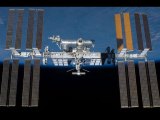
In addition to suspending most contracts, agency representatives will not travel to Russia or host Russian visits and teleconferences, The New York Times reported April 2. The two countries will continue to operate the space station together.
In his blog post March 25, NASA Administrator Charles Bolden wrote about the latest liftoff of an American astronaut, “not from the Space Coast of Florida or some other American spaceport, but from Kazakhstan on a Russian spacecraft.”
Bolden lamented the country's dependence on Russia to get astronauts to the space station. "Recognizing that this was unacceptable, President [Barack] Obama has requested in NASA’s budget more than $800 million each of the past 5 years to incentivize the American aerospace industry to build the spacecraft needed to launch our astronauts from American soil.”
If the president's request had been funded, Bolden wrote, “we would have returned American human spaceflight launches – and the jobs they support – back to the United States next year. With the reduced level of funding approved by Congress, we’re now looking at launching from U.S. soil in 2017.”
NASA DESIGN CHALLENGE: College students have an opportunity to help design systems for future space habitats and exploration through NASA's Exploration Habitat (X-Hab) Academic Innovation Challenge. Applications for the fifth annual challenge will be accepted through April 30.
The project challenges students to design prototype systems that may advance exploration capabilities. To take part in the X-Hab Challenge, student teams submit plans for the design, manufacture, assembly and testing of their system.
Previous X-Hab Challenge projects included an inflatable loft for crew sleeping quarters, plant growth systems, stowage systems and habitat layout designs. This year, students may choose projects from a variety of areas such as power distribution systems, advanced avionics, inflatable structures, additive manufacturing and food production systems.
See more information about the X-Hab Challenge here.
Related: